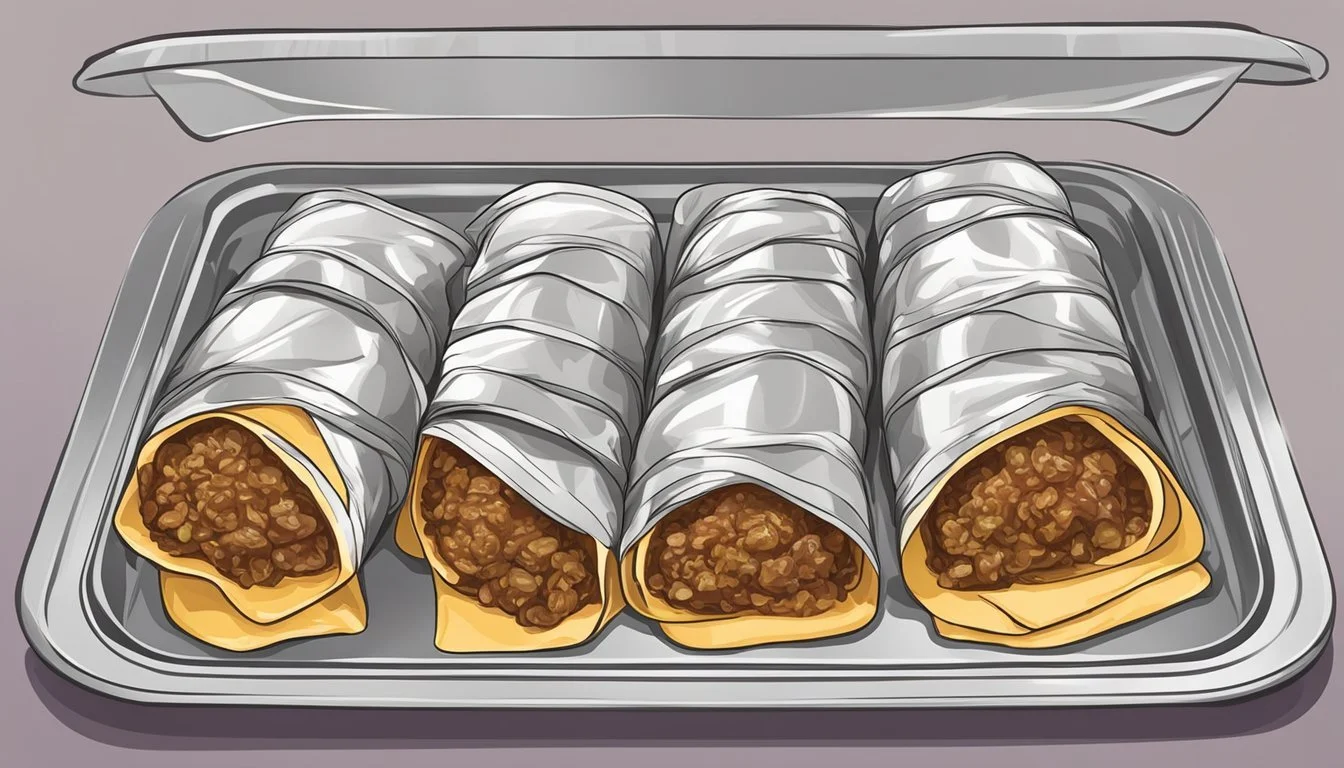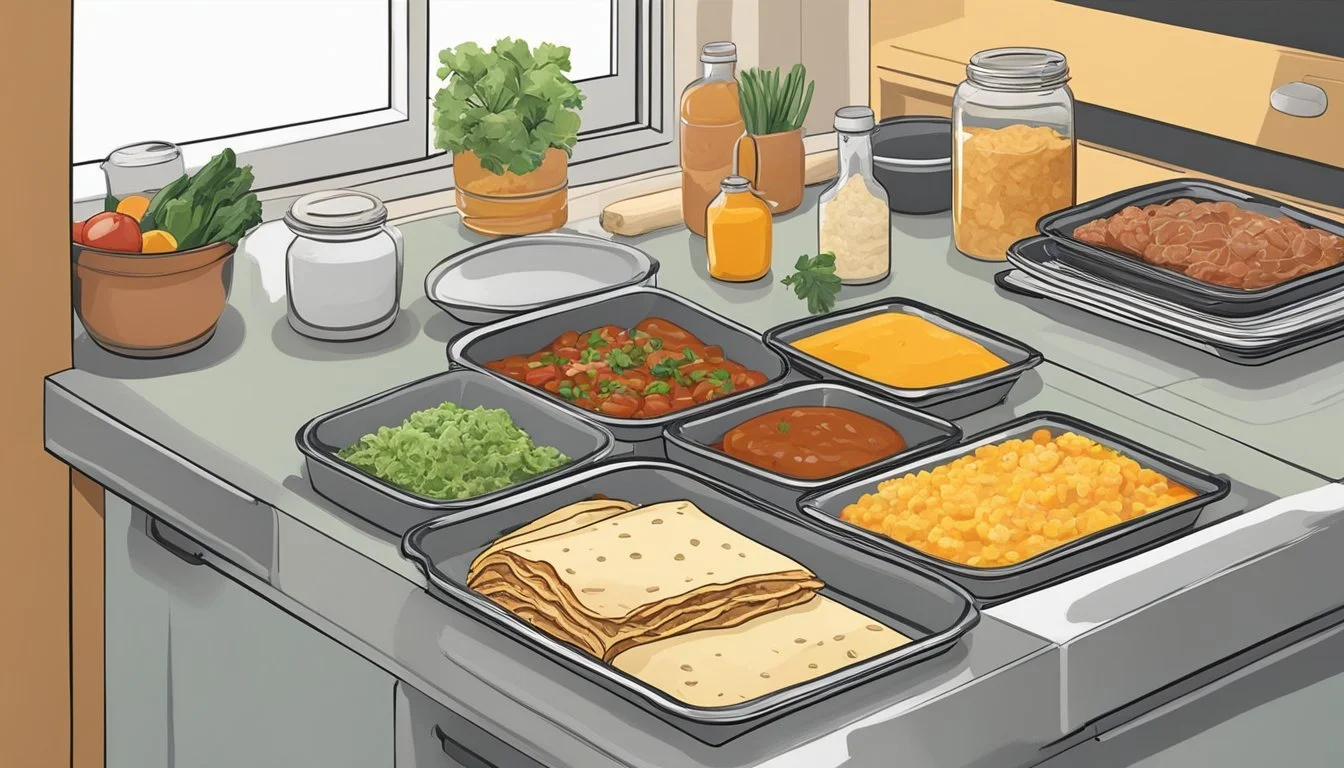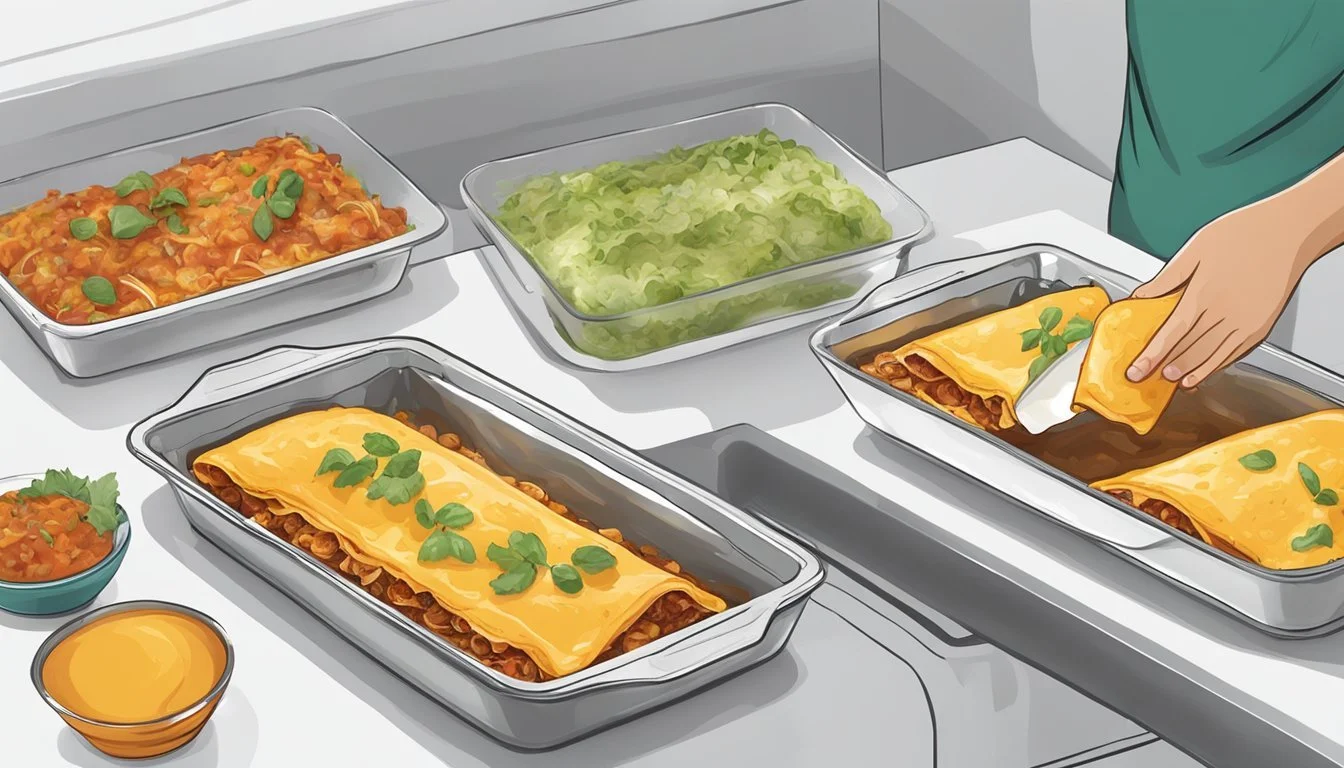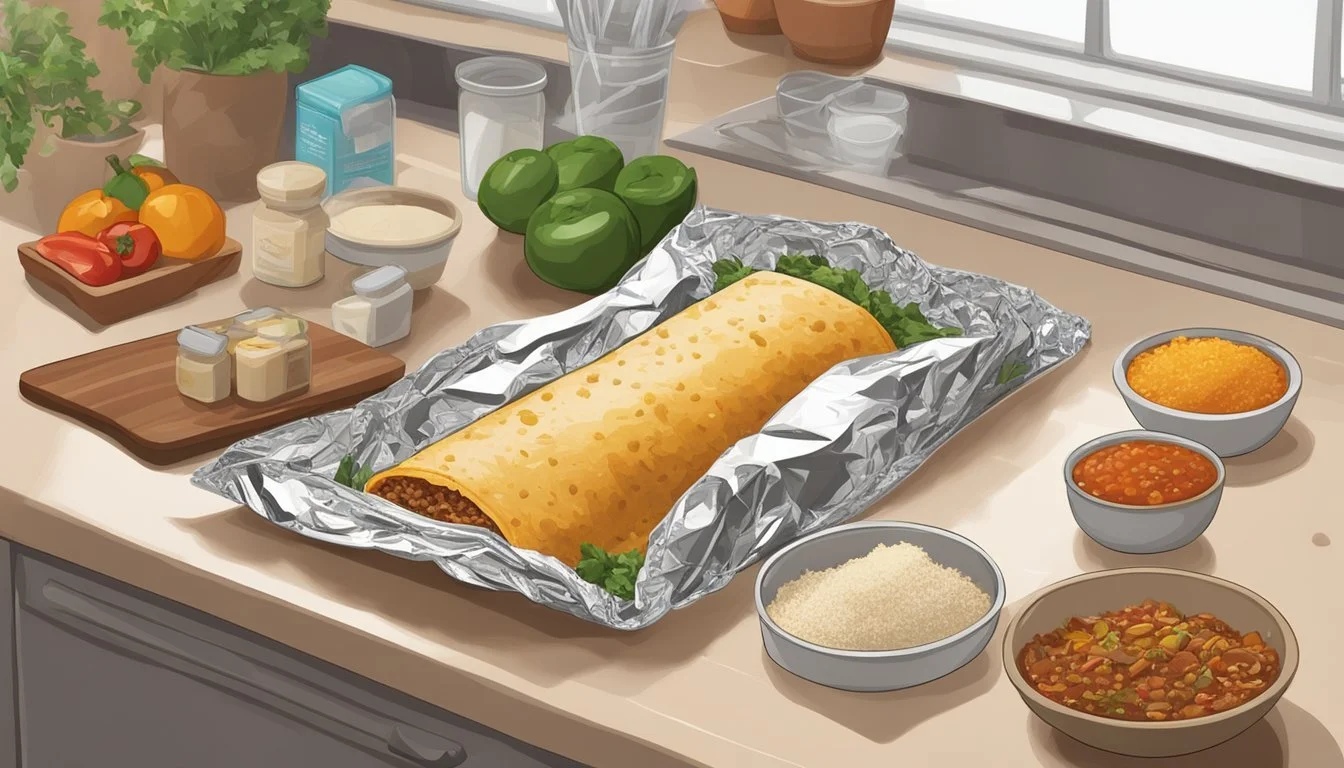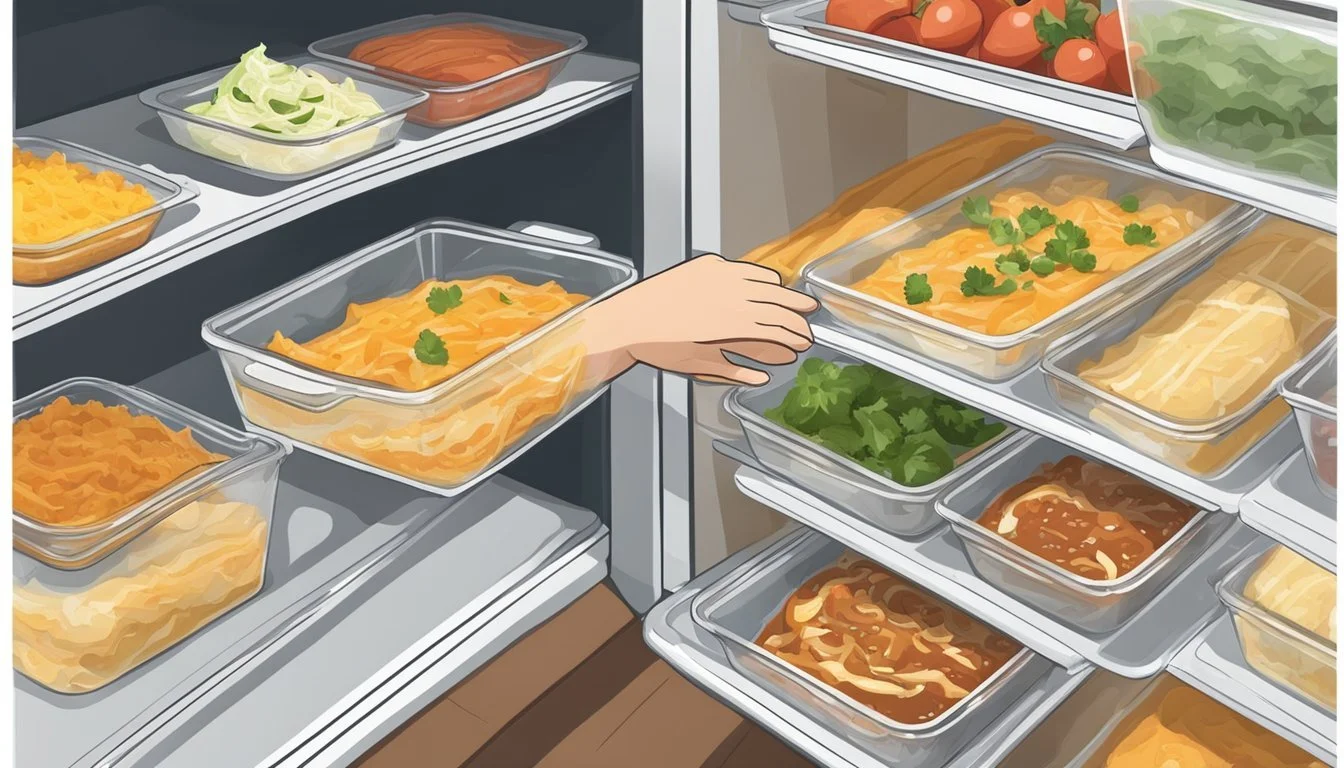How to Freeze Homemade Enchiladas
Efficient Tips for Speedy Meal Prep
When one has a craving for the rich flavors of homemade enchiladas but lacks the time for daily preparation, freezing becomes an invaluable method. Preserving enchiladas by freezing not only maintains their taste and texture but also turns them into a convenient meal ready at a moment's notice. It's a practical solution that enables anyone to enjoy this Mexican delicacy with minimal effort on busy days.
Freezing enchiladas is a relatively straightforward process. To ensure optimal results, it involves proper assembly, careful wrapping, and appropriate storage. This method preserves the enchiladas for future use without sacrificing the integrity of their ingredients. Enthusiasts can rest assured that with the right technique, they can have enchiladas that taste as fresh as the day they were made.
Selecting Ingredients for Freezing Enchiladas
When preparing enchiladas for freezing, selecting ingredients that maintain quality and flavor upon thawing is crucial. Durable tortillas, well-preserved cheese, a sauce that withstands freezing, and fresh, freezer-friendly fillings are key.
Choosing the Right Cheese
For enchiladas that freeze well, one must opt for cheese that can handle the freezing and reheating process without losing texture or taste. Fresh cheese risks becoming grainy, so it is advisable to select a good-quality shredded cheese, such as:
Cheddar (sharp or mild)
Monterey Jack
Mozzarella
Shredded cheese freezes better than blocks, and these varieties balance meltability with flavor retention.
Opting for Quality Tortillas
The foundation of any enchilada is the tortilla, and the choice between corn and flour tortillas affects freezing outcomes. Corn tortillas are traditional and hearty, less likely to become soggy:
Corn Tortillas: Robust and provide structure
Flour Tortillas: Softer and may become doughy when reheated
It is essential to ensure tortillas are fresh and pliable before assembly to prevent cracking during rolling and after freezing.
Picking the Proper Sauce
Enchilada sauce that freezes well should maintain consistency without separating or becoming watery. A thick, robust enchilada sauce made with quality ingredients such as tomato, chili powders, and chicken broth is ideal. Homemade sauce typically freezes better than store-bought, but if purchasing, select a brand with minimal preservatives.
Selecting Fresh Fillings
The fillings for chicken enchiladas (What wine goes well with chicken enchiladas?) or other varieties should be fresh and minimally moist to prevent a soggy outcome post-freezing. When using shredded chicken, ensure it is:
Cooked (but not overcooked)
Moistened with sauce, though not excessively
Vegetables or other additions should be sautéed to remove excess moisture before being incorporated into the filling. This pre-cooking step enhances the texture and flavor stability during the freeze-thaw cycle.
Assembling Enchiladas for the Freezer
When preparing enchiladas for freezing, it's essential to use techniques that prevent freezer burn and ice crystals, which can lead to soggy results upon reheating. Proper layering, wrapping, and container use are key to maintaining the quality of enchiladas in the freezer.
Layering Techniques
One begins by lining the baking pan with either parchment paper or aluminum foil, ensuring it extends up the sides of the pan to facilitate easy removal post-freezing. As the enchiladas are assembled with the filling of choice, they should be placed in a single layer to prevent them from sticking together or becoming misshapen.
Important: Make sure each enchilada is separated slightly to allow even freezing.
Wrapping with Plastic Wrap or Aluminum Foil
After the enchiladas are in place:
Cover the pan with a layer of plastic wrap, pressing down gently to remove air pockets.
Add an additional layer of aluminum foil over the plastic wrap for added insulation.
This double layering acts as a barrier against freezer burn and helps prevent the formation of ice crystals.
The aluminum foil should be sealed tightly around the edges to lock out air.
Using Freezer-Safe Containers
Should one prefer to use containers, they must ensure these are freezer-safe to withstand low temperatures. Here's the method:
Transfer the cooled assembled enchiladas into the container.
If stacking is necessary, place a sheet of parchment paper between layers to prevent sticking.
Before sealing, press out as much air as possible to minimize the risk of ice crystals.
The container should then be tightly sealed with its lid or with a layer of plastic wrap followed by aluminum foil.
By correctly assembling enchiladas for the freezer, they can be preserved for a convenient and quick dinner option, retaining the fresh taste and texture once reheated.
Freezing and Storing Enchiladas
Proper freezing and storing of homemade enchiladas can ensure they retain their flavor and texture for a quick and convenient dinner later. This section will discuss how to prevent freezer burn and the importance of labeling and date marking when freezing enchiladas.
Preventing Freezer Burn
To prevent freezer burn on enchiladas, one must create an airtight environment:
Assemble the enchiladas and place them in a baking dish. If using a pan, line it with aluminum foil or parchment paper with overhang to facilitate easy removal.
Cover the top with another sheet of foil, sealing the edges tightly to push out any air.
For individual enchiladas, wrap each one in foil separately before placing them in a freezer-safe bag.
This method reduces air exposure, thus minimizing the risk of freezer burn.
Labeling and Date Marking
Labeling and date marking frozen enchiladas is crucial for organization and ensuring food safety:
Use a permanent marker to label the foil or freezer bag with the contents and date of freezing.
A properly labeled freezer inventory allows for managing the rotation of frozen goods, consuming older items first.
Label Information Details Dish Enchiladas Date of Freezing (Write the date) Reheating Instructions (If applicable)
Labeling is an essential step that should not be skipped to help identify the frozen enchiladas and keep track of their storage time.
Thawing and Reheating Enchiladas
When ready to enjoy the enchiladas, the process includes safely thawing the frozen batch and employing the right reheating method to ensure a delicious meal.
Safely Thawing Frozen Enchiladas
Thawing: It is crucial to thaw frozen enchiladas safely to maintain quality and prevent any foodborne illnesses. The preferred method is to place the enchiladas in the refrigerator for several hours or overnight, allowing them to thaw gradually. Thawing at room temperature is not recommended as it can encourage bacterial growth.
Reheating Options
Oven Reheating:
Preheat the oven to 350°F (175°C).
Remove the enchiladas from all packaging and transfer them to an oven-safe dish.
Cover with foil to prevent drying out.
Heat for about 25-30 minutes if thawed, or 45-60 minutes if still frozen.
Note: These timings may vary depending on the size and quantity of enchiladas.
Microwave Reheating:
Place a serving of enchiladas on a microwave-safe plate.
Use the defrost setting if they are frozen, or heat on high for 2-3 minutes if thawed.
Rotate or stir midway for even heating.
Remember that microwaves can heat unevenly, so check the center of the enchiladas to ensure they are heated throughout before serving.
Tips for Best Quality Frozen Enchiladas
Ensuring that the enchiladas retain their texture and flavor when frozen and reheated is crucial. The following tips outline specific techniques to avoid common pitfalls such as soggy tortillas and bland taste.
Avoiding Soggy Tortillas
To prevent tortillas from becoming soggy when freezing enchiladas, one must address both the preparation and the freezing process.
Assembly: During assembly, one should be cautious not to oversaturate the tortillas with sauce. A light coating is sufficient as the sauce will penetrate over time and more can be added during reheating if necessary.
Extra Sauce: If there is extra sauce, it is advisable to freeze it separately and add it when reheating the enchiladas. This prevents the tortillas from breaking down in the freezing process.
Freezing Method: Line the baking dish with parchment paper before placing the enchiladas inside. Cover with foil to protect from freezer burn. When fully frozen, transfer the individual enchiladas to an airtight container, keeping them separated by parchment paper.
Enhancing Flavor After Freezing
Freezing can dull the taste of enchiladas, but with the right approach, they can still be delicious after reheating.
Seasoning: Before freezing, ensure the filling is well-seasoned. Flavors can become muted after freezing, so a slightly stronger seasoning can be beneficial.
Reheating Technique: Thaw enchiladas in the refrigerator before reheating to help maintain texture and flavor. Oven reheating is preferable as it can help to crisp the tortillas and revive flavors. Microwave reheating should be done cautiously, with regular intervals to stir the contents to distribute heat and prevent flavor loss. Adding a sprinkle of fresh cheese or herbs after reheating can also enhance taste and aroma.
By following these specific tips, one ensures that their frozen enchiladas are as close to freshly made as possible, providing a quick and enjoyable meal option.
Serving Suggestions for Frozen Enchiladas
When serving frozen enchiladas, one can elevate the meal with well-chosen side dishes and inventive toppings. These additions not only complement the flavors of the enchiladas but also complete the dining experience.
Complementary Side Dishes
Frozen enchiladas pair beautifully with a variety of side dishes that can balance the meal. Here are some excellent choices:
Spanish Rice: A classic side that pairs well with the rich flavors of enchiladas.
Refried Beans: Offer creaminess and a smooth contrast to the texture of the enchiladas.
Mexican Street Corn: Grilled corn tossed in a blend of mayonnaise, cotija cheese, cilantro, and chili powder to add a smoky flavor to the meal.
Cilantro Lime Rice: A lighter side that brings a zesty contrast to your dish.
Salad: A simple green salad with a lime vinaigrette can provide a refreshing side to the hearty enchiladas.
These sides not only sync perfectly with the tastes and textures of enchiladas but also ensure a rounded and satisfying meal.
Creative Topping Ideas
Beyond the usual cheese and sauce, consider offering an array of toppings to let diners customize their enchilada experience. Here are some topping recommendations:
Diced Avocado or Guacamole: Adds creaminess and a rich, buttery taste.
Fresh Salsa or Pico de Gallo: Introduces a bright, zesty element that cuts through the richness.
Sour Cream: Provides a cooling tang that complements the spices in the enchiladas.
Pickled Jalapeños: For those who enjoy a kick of heat.
Fresh Cilantro: Sprinkled on top, cilantro adds a burst of herbal freshness.
With these toppings, guests can tailor their enchiladas to their palate, creating an interactive and enjoyable dining experience.
Customizing Your Enchilada Recipe
Creating a unique enchilada dish can be easy and fun by experimenting with various fillings and adjusting it to cater to different dietary needs or preferences.
Alternative Filling Ideas
Chicken Enchiladas: For a classic option, one can opt for the ever-popular chicken enchiladas. To prepare the filling, mix shredded chicken with a choice of seasonings and a sprinkle of cheese. A simple recipe to consider is an easy chicken enchilada recipe which incorporates a mix of chicken, cheese, cilantro, and a robust enchilada sauce.
Beef or Pork: Shredded beef or pork can offer a hearty alternative.
Seafood: Shrimp or flaked fish for a coastal twist on the traditional recipe.
Cheese and Beans: A combination of melted cheese and hearty beans satisfies without meat.
Vegetarian and Gluten-Free Options
Vegetables: For a vegetarian twist, fill the enchiladas with a colorful array of vegetables. Bell peppers, onions, mushrooms, zucchini, and spinach make for a vibrant and nutritious option.
Use corn tortillas for a gluten-free version, ensuring that all additional ingredients are free of gluten.
Cheese Varieties: Experiment with different cheeses, from traditional cheddar to smoked gouda or feta, to alter the flavor profile.
Corn Tortilla vs Flour Tortilla: Corn tortillas are the traditional choice for enchiladas and are naturally gluten-free. However, those preferring a softer texture may opt for flour tortillas; just be aware that they typically contain gluten.
By considering these customizable options for one's enchilada recipe, adding variety and accommodation for various dietary needs becomes effortless.
Understanding Freezer Safety
Ensuring the safety and quality of frozen enchiladas begins with proper freezer maintenance and understanding when it's time to discard food. A well-maintained freezer is essential for preventing freezer burn and preserving the texture and flavor of frozen foods, including homemade enchiladas.
Best Practices for Freezer Maintenance
Maintaining a freezer involves regular cleaning and temperature checks to ensure it runs efficiently. Here are specific actions one should take:
Temperature: Maintain the freezer temperature at 0°F (-18°C) or below to safeguard against bacteria growth and maintain food quality.
Defrosting: Regularly defrost if it's not a frost-free model to prevent ice build-up that can affect the appliance's efficiency.
Organization: Use labeled and dated containers or bags to maximize space and keep track of when items were frozen.
Air Circulation: Do not overfill; ensure proper air flow for even cooling and to prevent warm spots where ice crystals may form.
Identifying When to Discard Frozen Enchiladas
Knowing when to throw out frozen enchiladas helps prevent food waste and safeguard against consuming spoiled food. One should look for these signs:
Ice Crystals: A few ice crystals on freshly frozen enchiladas are normal, but a heavy accumulation indicates that the food has warmed and refrozen, which can affect its quality.
Freezer Burn: White or grayish patches on the surface can signify freezer burn. The enchiladas are safe to eat but may have a compromised texture and flavor.
Time: As a general guideline, cooked enchiladas should not be kept frozen for more than three months. Beyond this, quality may decline.
By following these guidelines, one can ensure their freezer is a safe environment for preserving the quality of homemade enchiladas for enjoyable and convenient future meals.

